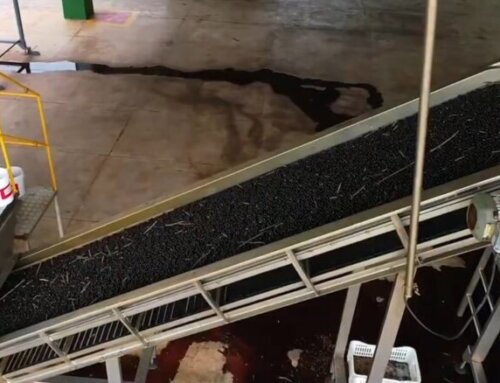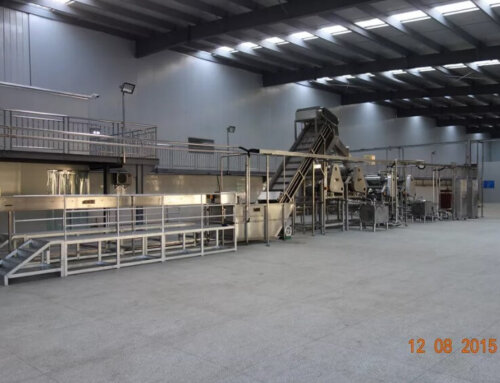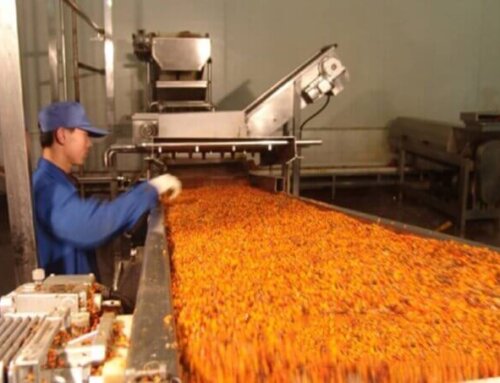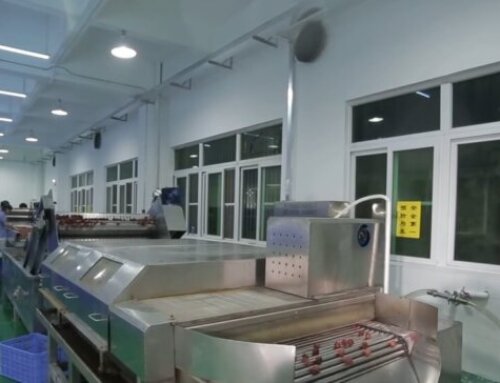Project Description
Coconut Processing Line
Coconut Processing Line Feature
- Coconut is rich in fat and nutrients. Copra meat contains 3.4%-4.0% protein, 30%-40% fat, and dry coconut meat contains 50%-70% oil. In addition, coconut meat also contains carbohydrates, fiber, minerals, vitamins and other nutrients. Coconut water is a high-grade refreshing drink, which contains 0.1% protein, 0.1% fat and 4% carbohydrate.
- The coconut processing line includes coconut dehusking and paring system, coconut water extraction, filtration and pasteurization system, coconut meat cleaning, blanching, sorting and coconut milk extraction system, coconut milk blending, sterilizing and filling system, coconut water evaporating, sterilizing and filling system, CIP cleaning system, RO water generating system.
- This coconut production line has high flexibility, it can produce UHT sterilized coconut cream and coconut milk, pasteurized chilled or frozen coconut water and milk, single-strength and concentrated coconut water, virgin coconut oil, desiccated coconut, coconut milk powder by adjusting the technological flowchart and machine. Aseptic bags, tin cans, bottles and other consumable packages can be used for packing coconut products according to client requirements.
- The industrial coconut milk production process involves harvesting mature coconuts, breaking them open, extracting the white flesh, grinding, extracting and mixing it with water and flavor agent, heating the mixture, separating the liquid from the solids, homogenizing and pasteurizing the milk, and finally, packaging it in containers in a clean environment for distribution and sale.
- The capacity of the coconut processing line is from 500LPH to 50000LPH available.
End Products and Package of Coconut Processing Line
—-Concentrate Coconut water filled into aseptic bags(5kg,220kg or 1000kg).
—Single-strength coconut water (Non-concentrated coconut water) filled into tin cans, bottles or aseptic bags.
—Coconut milk/cream filled into aseptic bags, aseptic cartons, tin cans or bottles.
—Desiccated Coconut filled into poly bags, jars or pouches.
—Virgin Coconut Oil(VCO) filled into bottles or barrels.
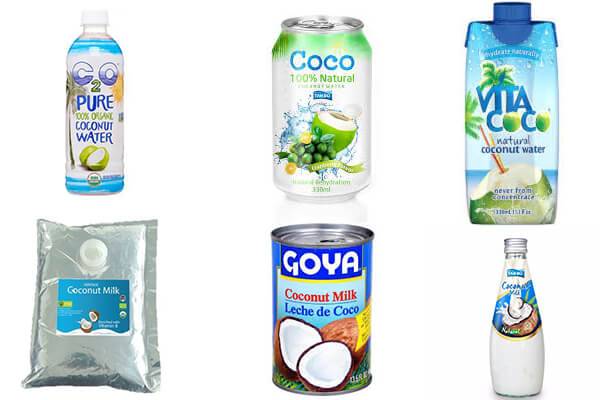
Coconut Production Process and Description
Single-strength coconut water is a refreshing and cooling drink. Its sodium and potassium content makes it an ideal drink for rehydration. In a healthy, undamaged coconut, the water is even sterile. Fresh coconut after dehusking and deshelling, then use one drill to pierce one hole on the coconut to extract coconut water. After extraction, coconut water is filtered. Filtration can be done using a double cloth filter, this is especially important for mature coconut water, as dry husk fibers and dirt from the shell of mature nuts can easily get into the coconut water during extraction. After filtration, the coconut water is quickly cooled to retard any deterioration reactions. Then, it is sent for separation, homogenizing, degassing, subsequent pasteurization and aseptic packaging.
If coconut water is extracted at a location away from the aseptic packaging site, the filtered coconut water can be packed into food-grade plastic bags, quickly cooled and transported to downstream processing. The single-strength coconut water content is 92%-95% and soluble solids is about 4 brix.
Concentrated coconut water: Concentrated coconut water is about 60-65 brix and water content is about 35%-40%. Fresh coconut water after extracting, filtering, cooling to 4 ℃ and storing in double layers insulation tanks. Then the low-temperature coconut water will be prepasteurization and separated. Then, it goes into a multiple-effect evaporation stage to increase °Brix levels. Usually, the product is concentrated to 60-65 °Brix and packed into 200 kg plastic bags in drums for bulk transportation under ambient conditions. It is recommended that the concentrated coconut water will be stored at below-zero temperature for 2 years.
Coconut milk/cream: Coconut milk and cream are produced from 10-13 months old mature coconuts when the kernel is hard and thick. They are natural oil-in-water emulsions extracted from the mature coconut kernel. The difference between coconut milk and cream is the amount of fat. The fat content of the coconut milk is 5%-20%, whereas coconut cream reaches to 20%-50%. To extract coconut milk for industrial manufacturing purposes, mature coconuts go through deshelling and paring. Pieces of kernels are then sent into industrial-scale cutters and grinders. Next, the grated coconut kernel then goes into a series of screw extractors or belt presses to extract coconut milk. The residual kernel from this first press is then mixed with water before it is pressed again to increase extraction yield. After extraction, coconut milk is filtered by a vibrating sieve machine to remove large contaminants. It can then be standardized to a pre-determined level of fat and blended with other ingredients. Finally, coconut milk is homogenized, degassed, sterilized or pasteurized and aseptically filled into aseptic bags, tetra pak cartons, or small packages like soft bags, bottles or tin cans.
Coconut milk powder production process: After extracting coconut milk from fresh coconuts, then the coconut milk after filtration, standardization and pasteurization, then pumped into the homogenizer for homogenization, then the coconut milk will be fed into the pressure/centrifuge spray dryer to make the coconut milk powder, after that, the anti-caking agents (such as maltodextrin) may be added to coconut milk powder to prevent clumping. The end coconut milk powder will be cooled and filled into the composite plastic pouches.
Desiccated coconut: Desiccated coconut is food with 2%-3% moisture content of coconut copra after being ground and dried, it is widely used in the baking of biscuits, snack bars, cakes, cookies and so on. After the grounded coconut copra enters the boiling drying room, under the action of the circulating hot air, the material flows in the drying room in a suspended and fluidized state. Each drying rate is equipped with a stirring device, which can prevent the material from being blocked in the drying room and promote the material flow in the drying room. the coconut copra exits the cylindrical multi-chamber dryer and then enters the vibrating fluidized bed for secondary drying to further ensure the dryness of the material. After the material exits the vibrating fluidized bed, it enters the linear vibrating screen to screen out the larger size of the desiccated coconuts. After drying, the coconut water content is reduced from 19% to 2%-3%. The end desiccated coconut can be filled into poly bags. When we use the belt dryer to dry the coconuts, the temperature is about 60℃-75℃.
Coconut oil: Coconut oil is one of the main products traditionally derived from the coconut kernel. Coconut oil processing methods or technologies are classified into two major types based on copra or fresh coconut kernel used. The oil extraction technology, which starts with copra as the raw material, is commonly known as the dry process. While the method that uses fresh coconuts as starting material is generally called the fresh-wet or fresh-dry process. Based on different separation methods, coconut oil can be classified into two types – RBD coconut oil and virgin coconut oil (VCO). The former is refined, bleached and deodorized (RBD) from dry extraction, while the latter is produced by fresh-wet and fresh-dry extractions.

Technological Flowchart Of Coconut Processing Line
Technological Flowchart of Concentrated Coconut Water and Single Strength Coconut water

Technological Flowchart of Coconut Milk and VCO Processing Line

Key Machine of The Coconut Water and Milk Processing Line:
Coconut water extracting machine
It is composed of a coconut water drilling machine and a coconut water extraction conveyor, the machine is made of SUS304 material and with vat for coconut water collection. It is semi-automatic, one operator holds the coconut and aims the coconut eye to the drill to get the water then pours coconut water into the coconut water collection vat.

Coconut dehusking machine
Coconut dehusking machine is to remove the outer hard husk. This type of peeling machine is semi-automatic equipment. It is mainly composed of a round cutter plate, a hard alloy cutter head, a wedge blade knife and a geared motor. When the machine is working, manually hold the coconut, align the position of the front coconut eye with the sprout blade, and press it down. At this time, the rotating peeling blade and the wedge-shaped top blade squeeze the coconut placed in it, thus smoothly peeling the coconut meat. The whole machine is designed for fixed installation and height-adjustable placement, which can satisfy both large-scale production line use and individual independent use, and has a wide range of adaptability. The capacity is 200-300PCS/H.
Coconut paring machine
This coconut testa removing machine, which is also called coconut scalping machine or coconut paring machine, removes the thin and brownish testa off the deshelled coconut. This coconut testa removing machine requires one operator to feed the deshelled coconut flesh in pieces into the machine during the paring operation.

Coconut meat blanching machine
The crawler-type coconut meat blanching machine is composed of a stainless steel tank, a stainless steel baffle track, a steam heating interface, a cleaning port, a water outlet, a motor, a cooling sprinkler, a temperature control unit and other parts. The coconut meat is fed into the blanching tank. Driven by the crawler belt, the material is slowly moved towards the discharge port after being blanched and sterilized by high-temperature water. After the material discharge from the blanching tank, it is sprayed with cold water and transport to the sorting machine.
The whole machine is made of SUS304 stainless steel except for standard parts such as motors and bearings, which fully meet food hygiene requirements. The equipment is suitable for the pre-cooking process of coconut meat, vegetables and fruits, and has good temperature control. The processes of feeding, moisturizing, cooking, and discharging can be operated continuously without interruption. It has the advantages of low labor intensity, high performance, easy operation, and labor-saving.

Coconut meat sorting machine
We use belt conveyor to sort coconut meat and cut the coconut meat into small pieces.

Coconut meat grinding machine
The coconut meat grinding machine consists of a feeding hopper, a sawtooth type converter, a frame, the main shaft, a bearing housing, a transmission, and a discharge hopper. When the coconut meat enters from the feeding hopper, the coconut flesh is transferred to the sawtooth by a tangential spiral and grinds the coconut meat into small particles(3-5mm).
Coconut milk extracting machine
There are two types of machines for coconut milk extracting: one is using belt press, the other is using double screw juice extractors. To increase the coconut milk yield rate, usually, two stages of double screw juice extractors or double screw extractors and belt press combined extraction method are adopted. In the first stage of coconut milk extraction, the grinded coconut meat will be fed into the double screw extractors or belt press, after extraction, the coconut flake slag discharged from the first stage extractor will be blended with RO water (coconut meat slag and RO water ratio:1:1) and then fed into the second stage belt press, double screw extractor or barrel type hydraulic press to get the coconut milk. Then the coconut milk from the first stage and second stage extractor will be mixed together.
The double screw type juice extractor usually has a higher yield rate than the belt press with about 55%-60%. The pneumatic double screw type extracting machine Working principle: Coconut kernel from the feed hopper led by screw. The cavity of the screw is smaller and smaller, press the coconut kernel, and coconut milk is pressed out and collected into a vessel, and the solid after extracted coconut milk is discharged out through the interspaces between the screw and pressure regulating head.

The belt press coconut milk extractor is used for a higher capacity coconut milk processing plant. The coconut meat will be ground into flakes, and then feed into the belt press extractor. During extracting, the RO pure water will be added.
Coconut water disk separator
In a coconut water processing line, water is collected in tanks after the coconuts have been cracked. As this liquid contains oil and small particles like coconut meat, a separator is needed to separate and remove solids and to separate the oil from the water, preventing oxidation and discoloration. The separators are able to maintain the highest nutritional value and all the healthy properties of the water present inside the coconuts. And the water flavor profile is maintained without compromise. We provide a plug-and-play solution that fits perfectly into the processing line. Our separators are easy to install, operate, and maintain, with the high g-force ensuring extremely efficient separation.

Coconut water and milk cooling batch tanks
After we obtain milk and water from fresh coconuts, the liquids are fragile, we need to cool down to 4℃ instantly and store them into a closed environment using chill water. The cooling tank is for storing coconut water and milk at low temperatures for next station processing. The tank is made of SUS304/316 food-grade material with double layers insulation completed with inlet, outlet, man-hole, agitator, CIP washing ball etc.

Coconut water evaporator
As fresh coconut water is hard to preserve, so we usually process it into concentrate coconut water, then dilute with water (concentrated coconut water and water ratio are 1:10)to get the repack coconut water drinks. Fresh coconut water-soluble solid content is about 4brix, after vacuum falling film evaporator, concentrate coconut water made into 65brix. Coconut Water Concentrate has strong coconut taste, has medium sweet and yellow to orange color. The end products usually fill into 220kg aseptic bags in drums and storage into a cold dry environment.

Coconut water and milk pasteurizer/sterilizer
There are two sterilizing processes during coconut water and milk processing. The first process uses plate-type pasteurizer to do pre-pasteurization (70-95℃ for 15-20 seconds)when extracting out the coconut water and milk, then storage into batch tanks instantly. the second process is that before coconut water and coconut milk filling, we use a tubular type UHT sterilizer(137-140℃ for 3-5 seconds) or DSI sterilizer to kill all the bacteria in the products. After sterilizing, the coconut water and milk can do aseptic filling into tetra pak cartons or hot filling into bottles or tin cans.
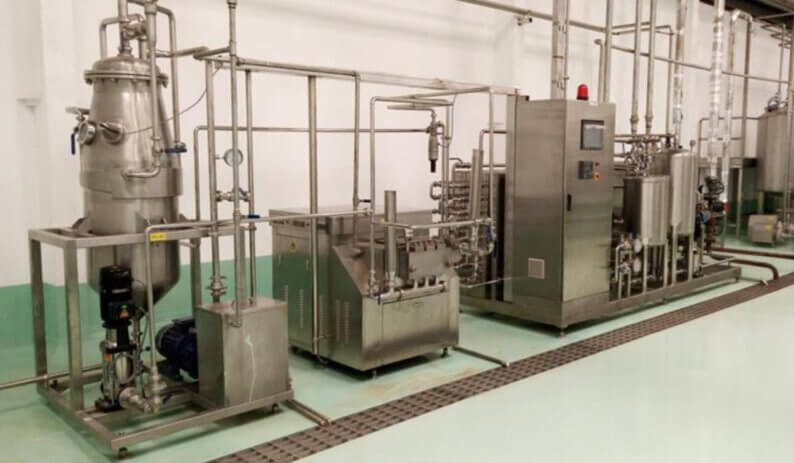
Coconut water and milk filler
According to different pasteurization/sterilization and filling methods combination, there are mainly three filling methods for coconut water and coconut milk products.
- Single-strength and RTD coconut water/coconut milk can do aseptic filling into aseptic brick cartons with UHT sterilization technology or hot filling into PET or glass bottles and small tin cans with pasteurization method;
- Concentrated coconut water will be filled into aseptic bags in drums for repacking after UHT sterilizing or filled into bags after pasteurization for blast freezing.
- Some manufacturers also make chilled or frozen coconut milk, this type of coconut milk after being pasteurized, will be cold-filled into containers then for cold distribution or frozen by blast freezer and for storage.
